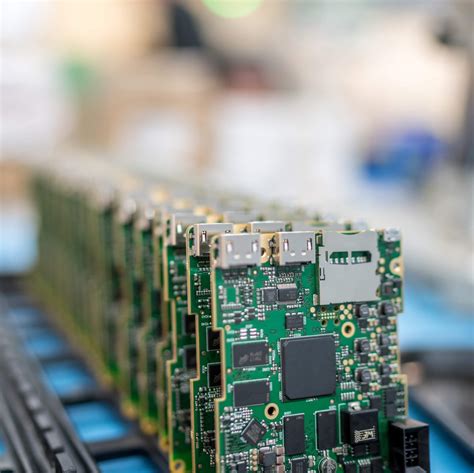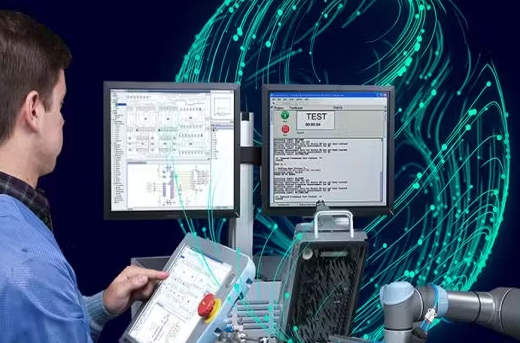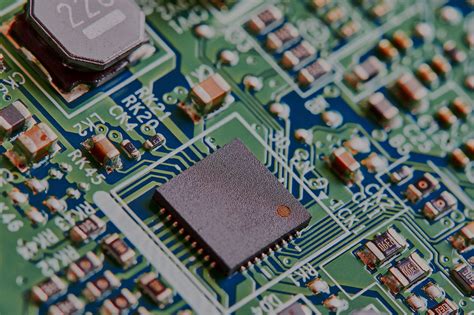Revolutionizing Electronics: The Future of PCB Assembly Techniques
Key Takeaways
The landscape of PCB assembly is undergoing a significant transformation, thanks to the integration of innovative technologies and methods that enhance the efficiency and precision of PCBA processes. Companies are increasingly adopting automation solutions that not only streamline production but also reduce human error, leading to higher quality outputs. Moreover, advanced techniques such as selective soldering and robotic assembly are redefining traditional practices, allowing for greater complexity and compactness in board designs. Sustainability is another crucial aspect that is gaining traction within the industry; organizations are exploring eco-friendly materials and processes that minimize waste while maintaining functionality. As we move forward, it is evident that the synergy between technology and sustainable practices will pave the way for a more robust future in board PCB assembly, fostering an environment where PCBA can thrive amidst new challenges and opportunities.
Introduction to PCB Assembly: A Cornerstone of Modern Electronics
PCB assembly (or PCBA) represents a fundamental aspect of electronics manufacturing, forming the backbone of virtually all electronic devices. The process involves the integration of various electronic components onto a printed circuit board (PCB), establishing pathways for electrical signals that ultimately allow devices to function. This intricate process requires not only technical precision but also an awareness of emerging technologies that can enhance its effectiveness. As we delve into the world of PCB assembly, we find that advancements in materials, methods, and machinery are continuously shaping how products are assembled and produced. Automation, for instance, has transformed traditional methodologies into streamlined applications that significantly reduce production time while increasing output quality.
Moreover, the growing emphasis on sustainability has led to innovative practices in board PCB assembly, enabling manufacturers to minimize waste and energy consumption throughout their operations. To illustrate the importance of this stage in electronics manufacturing, it is vital to recognize that effective pcb assembly processes not only guarantee product reliability but also dictate overall performance.
“Incorporating cutting-edge technologies into PCB assembly processes can result in greater precision and efficiency.”
As we proceed through this exploration, we will uncover how these advancements are being leveraged to refine methodologies and adapt to market demands, ensuring that PCBA remains at the forefront of innovation within the electronics industry.
Emerging Technologies in PCB Assembly: Trends and Innovations
The world of PCB assembly (more commonly known as PCBA) is experiencing rapid evolution, driven by a wave of technological advancements that are pivotal in redefining traditional methodologies. One of the most significant trends is the integration of automation and advanced technologies, which are transforming the board PCB assembly landscape. Automated processes, such as solder paste printing and pick-and-place operations, enhance efficiency by minimizing human error and speeding up production times. As a result, manufacturers can achieve higher output with consistent quality.
In addition to automation, innovative materials play a crucial role in these emerging technologies. For instance, the development of advanced substrates and components that withstand higher temperatures and improve electrical conductivity allows for the creation of more compact and powerful electronic devices. These innovations not only improve performance but also contribute to sustainability efforts in the industry.
Moreover, the rise of smart manufacturing techniques is revolutionizing quality control within PCB assembly processes. By incorporating advanced inspection systems that utilize artificial intelligence and machine learning algorithms, manufacturers can detect defects at an unprecedented scale. This ensures that products meet stringent quality standards before they reach consumers.
The combination of these trends culminates in a future where pcba processes are not only more efficient and precise but also better aligned with sustainable practices—ultimately setting a new standard for excellence within the electronics industry.
| Emerging Trends in PCB Assembly | Impact on Industry |
|---|---|
| Automation | Increased efficiency & reduced errors |
| Smart manufacturing | Enhanced quality control |
| Advanced materials | Improved performance & sustainability |
Through these various advancements, it’s clear that the future landscape of PCB assembly is poised for significant transformation—one that promises greater reliability, efficiency, and environmental consciousness.
Enhancing Efficiency: Automation and Advanced Techniques in Board PCB Assembly
The landscape of pcb assembly is undergoing a significant transformation driven by advancements in automation and innovative techniques. As the demand for sophisticated electronic devices continues to rise, the need for efficient pcba processes has never been more crucial. Automation technologies, such as robotics and artificial intelligence, streamline various stages of pcb assembly, significantly reducing production time while enhancing precision. These tools minimize human error and enable consistent, high-quality performance throughout the assembly process. Additionally, advanced techniques such as surface mount technology (SMT) allow for more compact and intricate designs, leading to improvements in the functionality of electronic products. By integrating these automation systems and cutting-edge methods into board PCB assembly, manufacturers not only increase operational efficiency but also focus on sustainability. The reduced waste generated through more precise production processes aligns with the industry’s growing emphasis on environmentally friendly practices. Thus, the convergence of automation with advanced pcba techniques is not just a trend; it represents a pivotal evolution in electronics manufacturing that promises to redefine efficiency and quality standards for the future.
Precision Matters: The Role of Quality Control in PCB Manufacturing
Quality control is paramount in PCB assembly to ensure the production of reliable and efficient electronic products. The complexities involved in the PCB assembly process necessitate stringent monitoring at various stages. From the initial design to final inspection, each phase provides an opportunity to implement quality checks that enhance the overall integrity of the printed circuit board assemblies (PCBA). Automated systems equipped with advanced imaging technology can detect faults and imperfections that may escape human inspection, thus increasing accuracy and efficiency. Moreover, adopting standardized testing protocols helps in meeting industry specifications and elevating product performance. By integrating real-time feedback loops into the PCBA process, manufacturers can react swiftly to any anomalies, ensuring a reduction in waste and a commitment to sustainability. Thus, fostering a culture of quality control not only addresses immediate production challenges but also reinforces long-term reliability and customer satisfaction in PCB assembly operations.
Sustainable Practices in PCB Assembly: Towards a Greener Future
As the electronic industry continues to evolve, the importance of sustainable practices in PCB assembly becomes increasingly critical. Companies are recognizing that implementing eco-friendly methods not only enhances their corporate responsibility but also boosts their efficiency and reduces costs. Modern PCB assembly techniques are now prioritizing materials that are not only high in performance but also low in environmental impact. For instance, the shift towards using lead-free solder and environmentally safe substrates is a testament to the industry’s commitment to sustainability. Furthermore, advancements in manufacturing technology allow for greater recycling processes, minimizing waste and ensuring that valuable materials are reused effectively. The integration of smart manufacturing solutions helps monitor energy usage during the PCBA process, ensuring optimal resource allocation and reducing carbon footprints. By adopting these innovative strategies, manufacturers can ensure that they are part of a sustainable future while still meeting the increasing demand for quality electronic products. As more companies transition towards greener practices, the journey towards sustainable PCB assembly illustrates a positive shift in how electronics are produced and consumed, paving the way for future advancements that balance performance with environmental stewardship.
Case Studies: Successful Implementations of Revolutionary PCB Techniques
In the rapidly evolving landscape of pcb assembly, several pioneering organizations have successfully implemented innovative techniques that have significantly enhanced their production processes. One noteworthy example is a global electronics manufacturer that adopted advanced automation technologies in their pcba lines, which resulted in a remarkable increase in assembly speed and a notable decrease in human error. By integrating smart factory principles with Internet of Things (IoT) devices, they achieved real-time monitoring and adjustments, leading to a 50% increase in overall efficiency. Another compelling case is seen in the automotive industry, where a leading car manufacturer began utilizing 3D printing for rapid prototyping of circuit boards, allowing for accelerated design iterations and minimizing costs associated with traditional manufacturing processes. This shift not only improved the agility of their production but also supported sustainability goals by reducing materials waste significantly. Furthermore, companies that invest in quality control automation systems have reported enhancements in product reliability, as precise adjustments are made during the assembly process to ensure compliance with stringent industry standards. These case studies underscore the transformative potential of modern techniques within pcb assembly, illustrating that embracing innovation can lead to substantial benefits across various sectors. As we move forward, it will be essential for more organizations to explore such revolutionary practices to stay competitive and meet the increasing demands of today’s electronic market.
Challenges and Solutions in Modern PCB Assembly Processes
Modern PCBA processes face a variety of challenges stemming from increasing complexity in electronic designs, demand for miniaturization, and the need for higher reliability. One major difficulty pertains to the integration of advanced technologies into traditional assembly methods. As electronic circuits become denser, achieving optimal placement accuracy during PCB assembly becomes critical. This challenge can be countered by investing in automated inspection systems, which enhance oversight during the PCBA process while reducing human error. Another significant issue is the management of supply chain disruptions, which can affect the availability of key materials needed for assembly. Companies are addressing this by fostering closer relationships with suppliers and exploring alternative sourcing strategies to secure reliable access to high-quality components.
Furthermore, sustainability remains a pressing challenge as manufacturers strive to minimize their environmental impact. Employing green manufacturing practices and utilizing recyclable materials in PCB assembly not only helps reduce waste but also attracts environmentally conscious consumers. While these challenges are considerable, industry leaders are continuously developing innovative solutions that enable manufacturers to navigate these complexities effectively, ensuring that the future landscape of PCBA remains bright and forward-thinking.
The Future Landscape of PCB Assembly: Predictions and Opportunities
As the demand for more sophisticated electronics continues to rise, the landscape of PCB assembly (or PCBA) is set to undergo significant transformations. Future advancements will likely revolve around several key trends, reshaping how pcb assembly processes are executed. One major opportunity lies in the increasing integration of artificial intelligence and machine learning, which can enhance decision-making and predictive maintenance within pcba operations. These technologies will enable manufacturers to optimize production schedules and reduce downtime, ultimately increasing overall efficiency.
In addition, sustainability will play a crucial role in the evolution of pcb assembly methods. A growing emphasis on environmentally friendly practices suggests that manufacturers must adopt new materials and processes that minimize waste and energy consumption. Innovations in biodegradable components and recyclable materials can potentially redefine how PCBA is approached.
Moreover, advancements in connectivity—often referred to as the Internet of Things (IoT)—could offer unprecedented opportunities for real-time monitoring of assembly lines. This will enhance transparency, allowing manufacturers to swiftly address potential quality issues while streamlining operations.
In summary, the future holds promising opportunities shaped by technological innovations that prioritize efficiency, precision, and sustainability in pcb assembly. Embracing these trends will enable companies to stay competitive in a rapidly evolving electronics market while meeting consumer demands for both functionality and environmental responsibility.
Conclusion
As we look toward the horizon of PCB assembly, it is evident that the field is undergoing significant transformations driven by innovative advancements. Techniques in PCBA are evolving rapidly, focusing on optimizing both efficiency and precision in manufacturing processes. The integration of cutting-edge technologies, such as automation and artificial intelligence, is revolutionizing the traditional assembly lines, thereby enhancing production speed without compromising quality. Furthermore, the emphasis on sustainable practices is reshaping the industry’s approach to materials and processes, fostering an environment that prioritizes ecological welfare alongside operational effectiveness. While challenges remain, particularly in adapting to these new technologies and maintaining quality standards, there is a promising landscape ahead. As manufacturers continue to implement these revolutionary PCB assembly techniques, they are not only addressing current market demands but also paving the way for a more sustainable and efficient future in electronics. Thus, it is crucial for stakeholders across the industry to embrace these changes and prepare for an era characterized by continuous improvement and innovation in PCBA processes.
FAQs
What is PCB assembly?
PCB assembly, often abbreviated as PCBA, refers to the process of connecting electronic components to a circuit board. This is a critical step in creating functioning electronic devices, as it ensures that all parts are properly aligned, soldered, and operational.
What are the common techniques used in PCB assembly?
There are several techniques in PCB assembly, including surface mount technology (SMT) and through-hole technology (THT). SMT is preferred for its efficiency and compact design, while THT is used for larger components needing more robust connections.
How important is quality control in PCB assembly?
Quality control is vital in ensuring that the PCBA process meets strict standards. Proper inspections throughout the manufacturing and assembly process help to identify defects early, leading to greater reliability and performance of the final product.
What role does automation play in enhancing efficiency?
Automation significantly enhances efficiency in board PCB assembly, enabling faster production times with reduced human error. Automated machines can place and solder components with high precision, allowing for mass production while maintaining consistent quality.
Are there sustainable practices being adopted in PCB assembly?
Yes, there are numerous sustainable practices emerging within the realm of PCB assembly, such as the use of eco-friendly materials and recycling processes. These practices aim to minimize waste and environmental impact while promoting a greener future for electronics manufacturing.
For more detailed information about advanced methods and technologies in pcb assembly, please click here: Andwin PCB Assembly.






